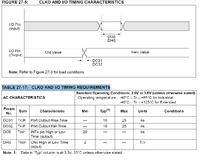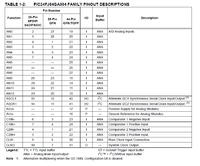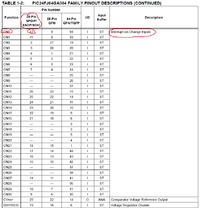T
treez
Guest
I am using the PIC24FJ64GA004 with a 32.768KHz external oscillator.
I want to have an interrupt..... the pin will go from high to low for just 3us...then back to high again.....and i am hoping that the pic will "see" this 3us low pulse and go to interrupt routine.
Is this possible?.....if not, then how long would the low pulse have to last to make it possible?
PIC24FJ64GA004 DATASHEET:
**broken link removed**
I want to have an interrupt..... the pin will go from high to low for just 3us...then back to high again.....and i am hoping that the pic will "see" this 3us low pulse and go to interrupt routine.
Is this possible?.....if not, then how long would the low pulse have to last to make it possible?
PIC24FJ64GA004 DATASHEET:
**broken link removed**



